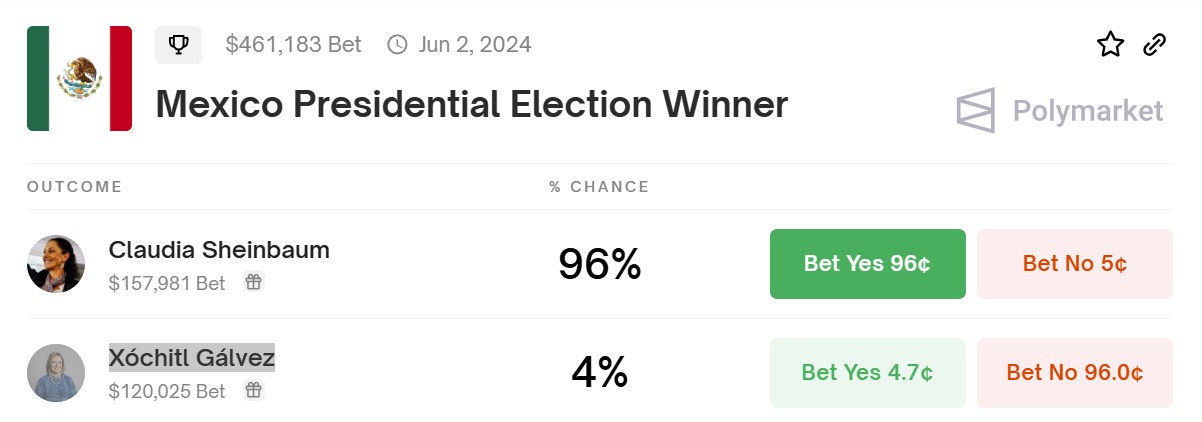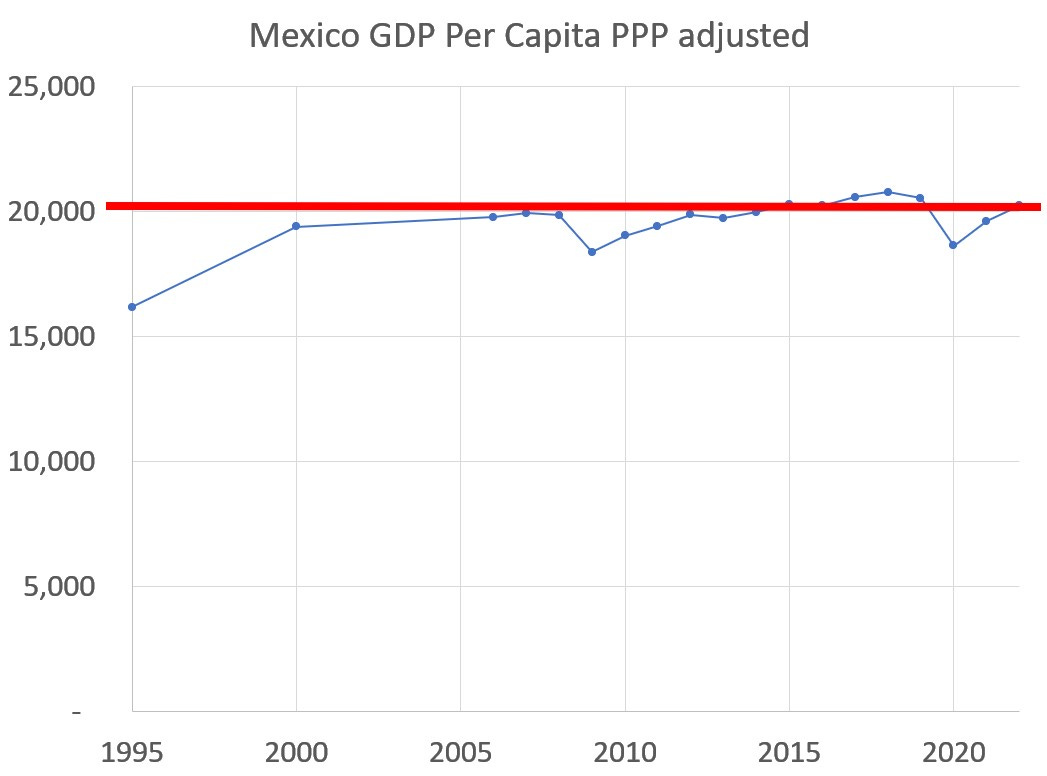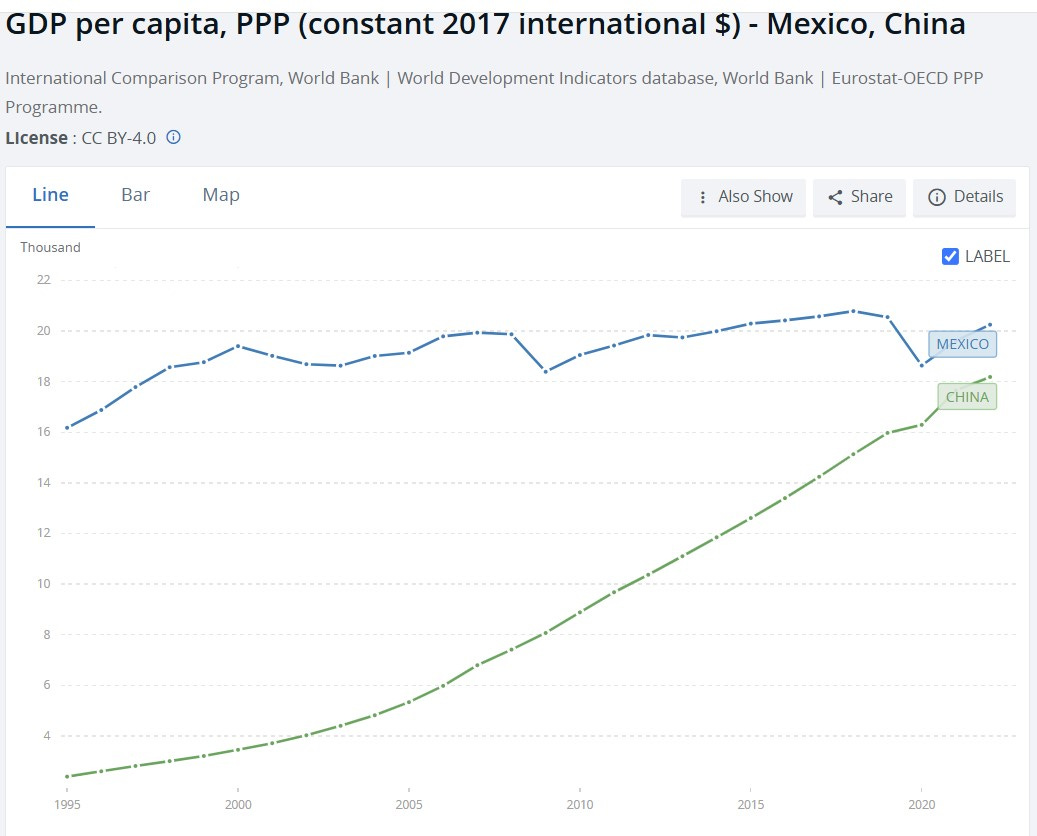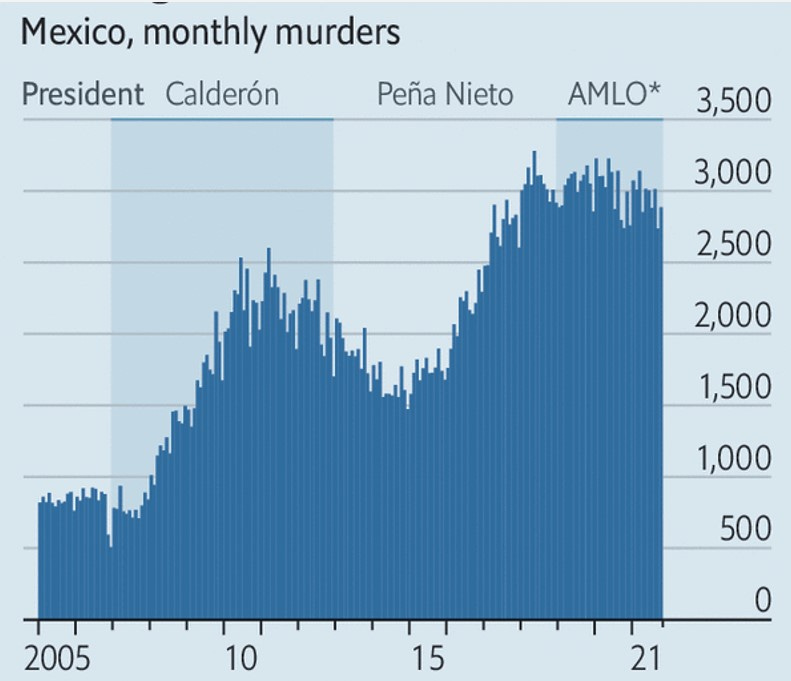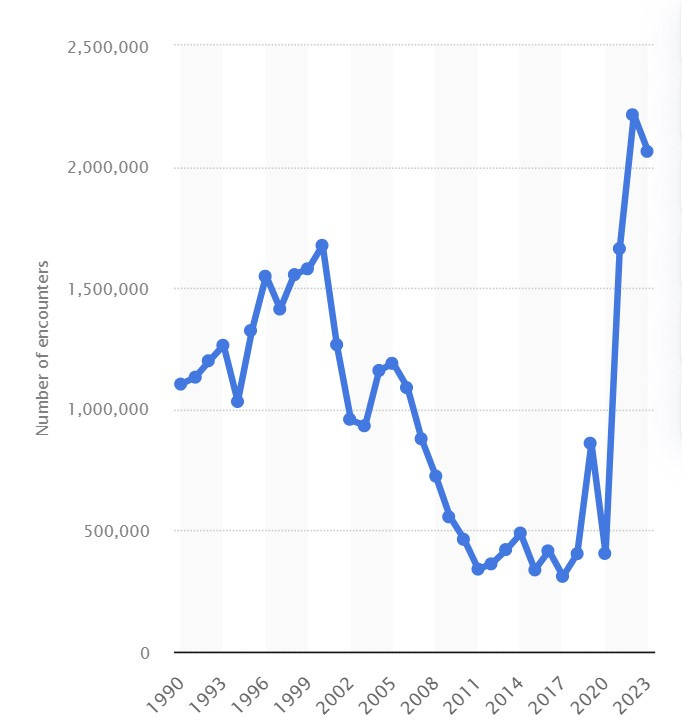Claudia Sheinbaum is the new president of Mexico
No surprises
The electoral system in Mexico is presidential - a president is elected by popular votes. Unlike the US, there is no electoral college system. It is straight up a national majority.
There is another important rule: You can only be a president for one six year term.
This fact gave rise to what appears in the title: El año de Hidalgo - The Year of Hidalgo.
You can read about how the name came about in this article (in Spanish).
Executive summary: Since there is one term, the ruling party tends to loot the most in the final year - dubbed “The year of Hidalgo”.
Mexico had the habit of entering a financial crisis every six years - for decades.
2024 is the Year of a Woman President
There are three contenders for presidency this year (so far - it might become two). But, realistically, there are two - both happen to be women.
Ms Claudia Sheinbaum - an ex-academic of Jewish heritage and the immediate chief of Mexico City. She is running with the MORENA ticket - the party founded by the current president - Mr Lopez Obrador - popularly known as AMLO. He ran three times - first in 2006, then again in 2012 and finally in 2018 to clinch the presidency. [Full disclosure: I worked *for* his pension reform agenda in 2006. It turned out to be very unpopular within his party at the time. It was dropped.]
AMLO has become a very charismatic leader - some people call him messianic. His transformation has been stark. Mysteriously it seems his collaborators have become fabulously wealthy. Most people suspect it is the Year of Hidalgo Effect.
Ms Sheinbaum has ridden AMLO’s coattails - and is the nominee for MORENA. Her main opponent is Ms Xóchitl Gálvez - an entrepreneur of indigenous heritage.
Who won on June 2? Sheinbaum won by a two to one margin
It is a foregone conclusion: The winner will be Ms Claudia Sheinbaum - the woman with a doctorate in environmental sciences.
This is the verdict from the betting markets.
Not everybody is happy with this almost certain outcome.
https://lopezdoriga.com/opinion/pompas-ricas-de-colores/
[In the Twentieth Century, Mexican presidential election was a mere formality. One party, PRI, ruled for seven decades. It was a custom that a president picked a successor called dedazo - finger pointing. In due course, the anointed candidate won the election. Not surprisingly, all old timers - like AMLO - once belonged to PRI - the Revolutionary Institutional Party - the biggest oxymoron of a name we can imagine.]
How is Mexico doing?
Performance of the Mexican economy in the past two decades in one chart
Executive conclusion: Mexico has squarely fallen into the middle income trap. Per capita income is stuck at around 20,000.
A comparison with China tells us vividly how China has eaten Mexico’s lunch.
Does that mean Mexico is doomed over the next decade?
Not necessarily. Two things have happened in Mexico’s favor:
Average wages in China have caught up with the Mexican one. China is no longer an attractive manufacturing magnet for the US industries.
The US industries have been backpedaling furiously recently to decouple from China for strategic reasons. Offshoring is supplanted by nearshoring. Mexico could potentially benefit from that.
Positive Side of Integration
Mexico is already the third largest destination for the US exports: Canada ($356.5 billion), Mexico ($324.3 billion), China ($150.4 billion). It is also the second largest for US imports: China ($536.3 billion), Mexico ($454.8 billion) [all for 2022].
Mexico has had a free floating currency for the past three decades - the only country in its class. For example, none of the BRICS countries have it.
Mexico has become much more integrated to the wealthy northerly neighbors in the past two decades. Let me illustrate that with a personal example. Two decades ago, I could transfer money from my Mexican bank account to my US bank account without limit. But, it took *a week* to execute a confirmed transfer. Today it takes two *hours*. Almost all supermarket items that you can buy in the US, you can also buy in Mexico. The Day of the Dead in Mexico has now merged with Halloween.
https://tapen.substack.com/p/day-of-the-dead-at-the-unam
Negative Side of Integration
With the integration, came the ugly side of it - the drug trade. Mexico has been a transit point for Colombian cartels. But now Mexico itself has a big drug problem.
There are cities in the north and west, where the cartels run the government - either explicitly or by tacit agreement. I have been to pueblos in the Sierras of Guerrero - where your passage in a car requires a pre-approval by the local drug cartel. Or else you might not live to see the next day. The upshot has been a steady rise of homicides in Mexico with no sign of any decline.
You hear about this only when some foreigners are murdered. Under foreign pressure, these crimes are often solved by “confessions”.
https://www.bbc.com/news/world-australia-68967350
Meanwhile, there are 100,000 unsolved murders of Mexicans and counting. No end in sight.
Integration had another side effect. Illegal border crossing. If we examine apprehensions and expulsions registered by the United States Border Patrol from the 1990 fiscal year to the 2022 fiscal year, a curious fact emerges. There is a sharp jump in 2021. The vast majority of these people do not come from Mexico. They come from other parts of the world, not just Latin America.
Bienvenida, Nueva Presidenta
All of these problems await the next president of Mexico - who is inaugurated on October 1, 2024. Meanwhile, the Year of the Hidalgo continues.


